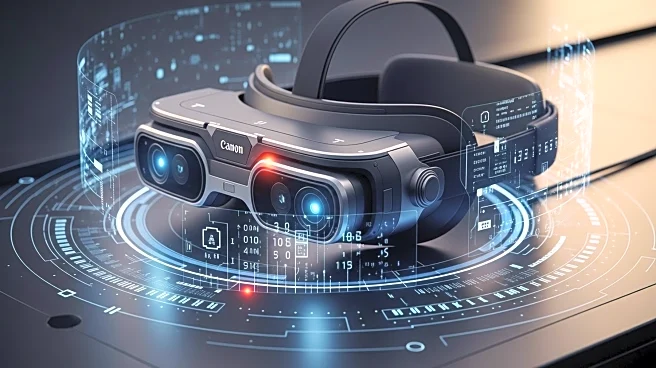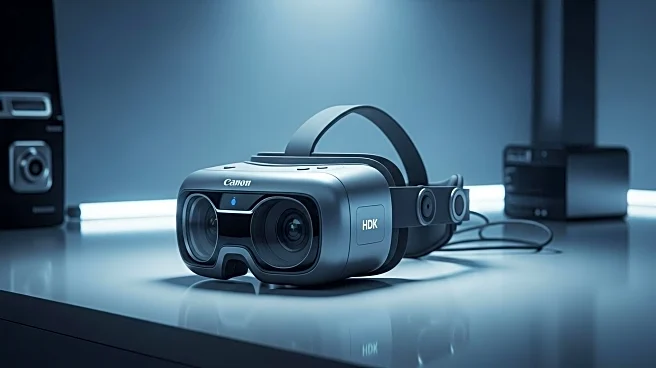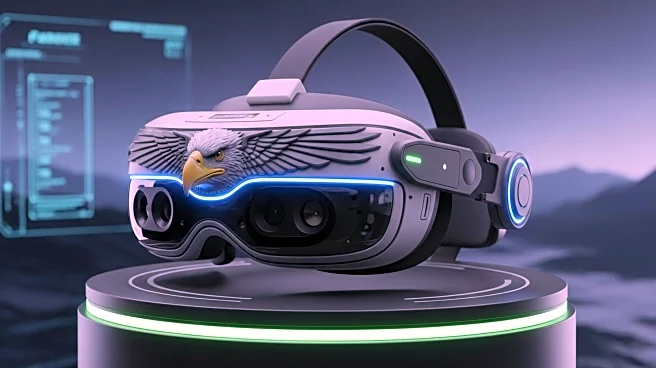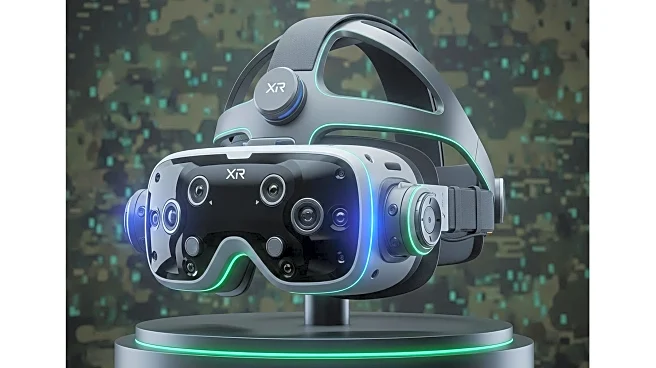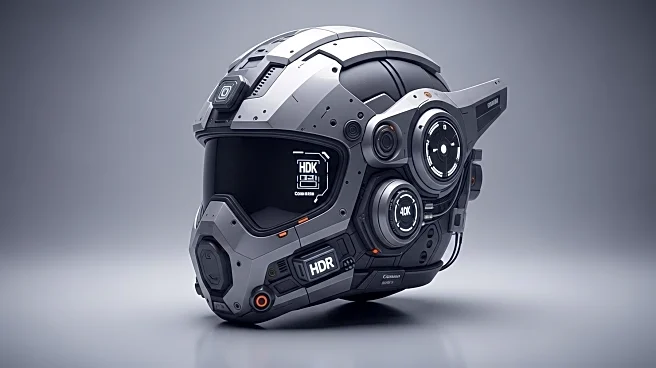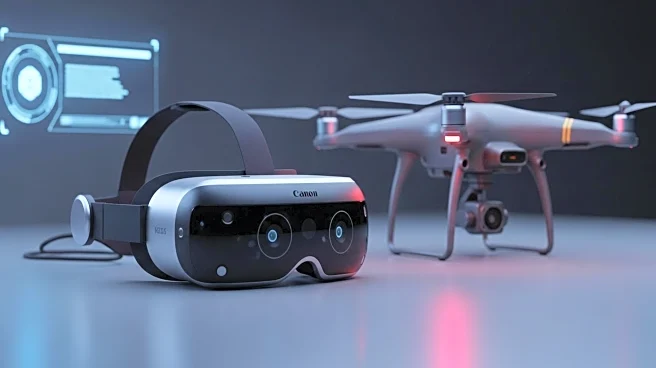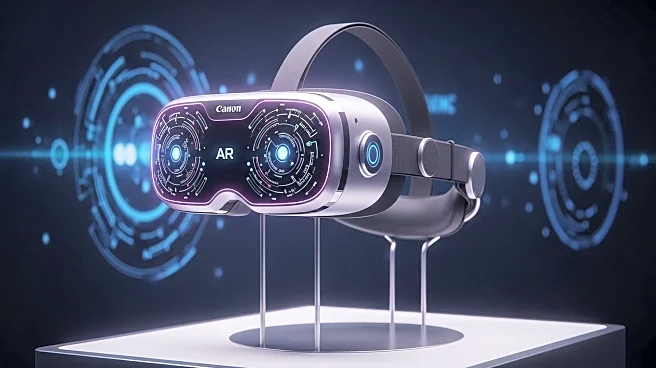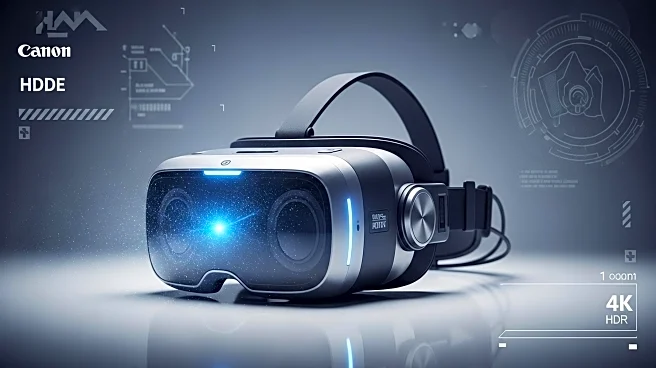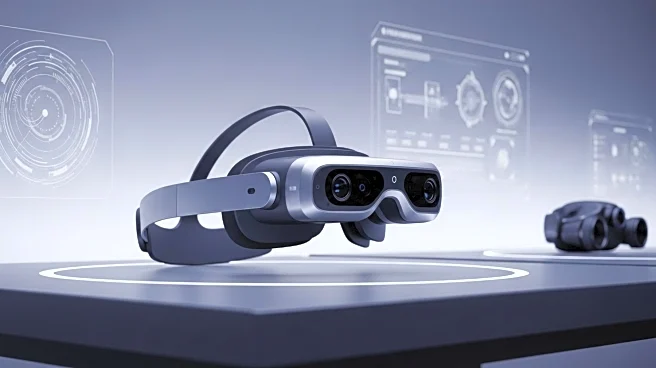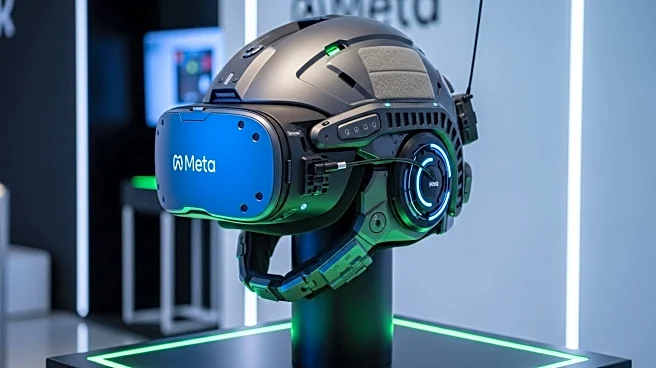What is the story about?
What's Happening?
Anduril Industries, a military technology company founded by Palmer Luckey, has introduced its new XR headset system, EagleEye, developed in collaboration with Meta. The headset is designed to enhance soldiers' situational awareness by overlaying digital information onto the real world. Features include a heads-up mini-map, the ability to switch between Low Light and Thermal displays, overhead drone shots, and AI-driven tracking markers. These capabilities aim to improve perception, connectivity, and survivability on the battlefield. The EagleEye system integrates various information streams from Anduril's Lattice battlefield platform, such as RF signature detection, rearview cameras, non-emissive lasers, biometric and environmental sensors, and real-time alerts. Anduril is competing for a U.S. Army contract against Rivet, a defense company, to replace the previous Integrated Visual Augmentation System (IVAS) project initially awarded to Microsoft.
Why It's Important?
The introduction of the EagleEye XR headset represents a significant advancement in military technology, potentially transforming how soldiers engage in combat. By providing real-time data and enhanced situational awareness, the headset could improve decision-making and operational effectiveness. This development is crucial as the U.S. military seeks to modernize its equipment and capabilities, especially after previous attempts with Microsoft's IVAS faced challenges. The competition for the U.S. Army contract highlights the growing interest and investment in augmented reality technologies for defense purposes. Success in this area could lead to broader adoption of similar technologies across various military branches, enhancing national security and defense strategies.
What's Next?
Anduril's EagleEye XR headset is poised to enter the competitive landscape for military contracts, with the U.S. Army evaluating its potential against other contenders like Rivet. The outcome of this competition could influence future military procurement decisions and set a precedent for the integration of advanced XR technologies in defense operations. As the technology evolves, there may be further developments in telepresence and autonomous systems, potentially reshaping military tactics and strategies. Stakeholders, including defense contractors and military leaders, will closely monitor the performance and adaptability of these systems in real-world scenarios.
Beyond the Headlines
The deployment of XR technology in military operations raises ethical and strategic considerations. The potential for autonomous systems and telepresence capabilities could alter the nature of warfare, reducing human involvement in direct combat. This shift may lead to discussions on the implications of remote warfare and the role of technology in military decision-making. Additionally, the integration of gaming-inspired interfaces in military equipment highlights the crossover between consumer technology and defense applications, potentially influencing future design and usability standards.
AI Generated Content
Do you find this article useful?


